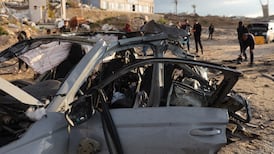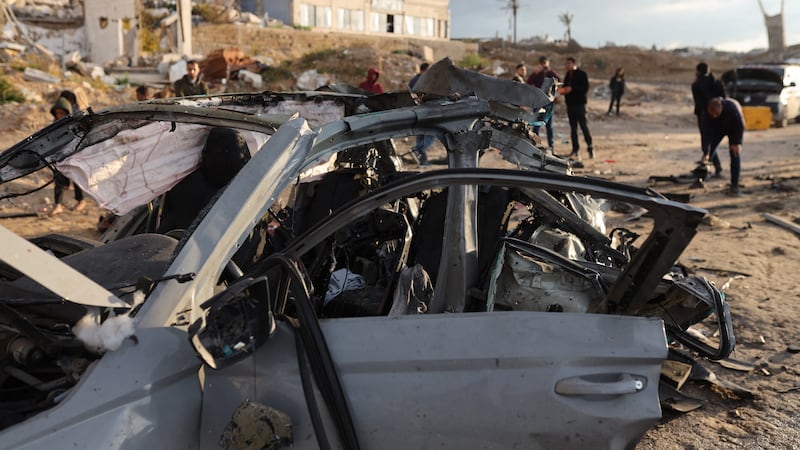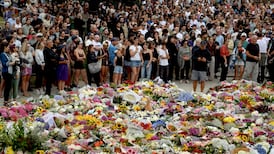Israel has concluded that some of Iran’s underground stockpile of near-bomb-grade enriched uranium survived US and Israeli attacks last month and may be accessible to Iranian nuclear engineers, according to a senior Israeli official.
The senior official also said Israel had begun moving toward military action against Iran late last year after seeing what the official described as a race to build a bomb as part of a secret Iranian project. The official spoke on condition of anonymity because of the sensitivity of the information.
The official said Israeli intelligence picked up the nuclear weapons activity soon after the Israeli air force killed Hassan Nasrallah, the long-time leader of Hizbullah, the Iran-backed militia in Lebanon. That observation prompted Israeli prime minister Binyamin Netanyahu to prepare for an attack with or without US help.
In the days surrounding Israel’s attack on Iran in mid-June and president Donald Trump’s subsequent decision to join in the action, US intelligence officials said they had seen no evidence of a move by Iran to weaponise its stockpile of near-bomb-grade uranium. The US struck two of Iran’s most critical enrichment sites with 30,000-pound bunker-busting bombs and aimed a barrage of submarine-launched Tomahawk missiles at a third site, where the fuel could be converted for use in weapons.
RM Block
The Israeli official said the evidence gathered about the secret programme – which the official did not describe in any detail – had been fully shared with the US.
But in interviews in January, US officials said they did not believe Iran was yet racing for a weapon, even though they described a nascent effort to explore “faster, cruder” approaches to building one. And the director of national intelligence, Tulsi Gabbard, told congress in testimony in March that she saw no evidence the Iranians had decided to build a weapon, a position intelligence officials reiterated in June.
In a briefing for reporters Wednesday evening, the senior Israeli official did not express concern about the assessment that some of the stockpile of 60 per cent enriched uranium, stored in casks, had survived the attack. The official, and other Israelis with access to the country’s intelligence findings, said any attempts by Iran to recover it would almost certainly be detected – and there would be time to attack the facilities again.
Western intelligence officials confirmed the Israeli assessment, saying they believed much of the stockpile was buried under rubble in Iran’s nuclear laboratory at Isfahan and potentially other sites. One of the officials concurred that the US or Israel would know if the Iranians tried to retrieve the enriched uranium. Such a move, the official said, would surely invite a renewed Israeli bombing attack.
Israel, the US and now a growing number of outside experts agree that all of Iran’s working centrifuges at Natanz and Fordo – about 18,000 machines, which spin at supersonic speeds – were damaged or destroyed, probably beyond repair. The question they are now examining is how long it would take the Iranians to rebuild some or all of that capability, especially after the top scientists in their nuclear programme were targeted and killed.
Trump has stuck to his insistence that the Iranian programme was “obliterated” and that Iran’s leaders were no longer interested in nuclear weapons after being struck by US warplanes. Defence secretary Pete Hegseth has said the bombing left the fuel and equipment at the most protected site, Fordo, “buried under a mountain, devastated and obliterated”.
On one point – whether Iran moved a large part of its stockpile of 60 per cent enriched uranium just before the US strike in the early morning of June 22nd in Tehran – the Israeli assessment differs from the conclusion of Rafael Grossi, secretary general of the International Atomic Energy Agency.
Grossi has said he believed much of the stockpile that was stored at Isfahan was transferred from the site before Israeli and US weapons struck. The senior Israeli official contends that nothing was moved. The storage site at Isfahan, the official said, was too deep for even the most powerful US weapons to destroy.
But the US attack on Isfahan did close off many entrances, and appears to have wiped out laboratories that convert enriched uranium into a form that could be used in a weapon and that would then fashion it into a metal that could be shaped into a missile warhead.
Speaking at the Nato summit at The Hague, Netherlands, two weeks ago, Trump said the US strikes “set back Iran’s ability to develop nuclear weapons for many years to come” and suggested he would be willing to strike again if needed.
This article originally appeared in The New York Times



















